| When the school opened in 1878 there were over 100 pupils attending the school. Before road widening the school was situated on the corner of Mount Duneed and Torquay Roads (south-west corner). The first school in this location was destroyed by fire in 1944. Former head teachers AT Abercrombie (1878-1882) T Job (1882-1889) HP Bechervaise (1889-1891) W Errey (1891-1896) VP Nolan (1897-1900) WG Catron (1900-05) OE Farrer (1905-09) AV Deeble (1910-11) CW Bradhurst (1913-16) TJ Macartney (1916-20) JE Marshall (1920-24) AL Debney (1924-26) F Hope (1926-28) EME Clinton (1927) JT D'Helin (1928) H McGregor (1928-29) As there were so few pupils at Mount Duneed and Freshwater Creek schools Mr McGregor held 2 days at one school and three at the other alternating each week (1929-34) GA Law (1934) GR Mead (1935) MR Kent (1937) HM Collins (1939) The school closed for four years. About this time a local resident remembered frequently borrowing children (transfers and all) from her sister in Melbourne to keep the school opened. MT Simms 1943-44) JE Colleshaw (1944) O Tryhorn and J Eltham (1944-48) JW France (1948-54) H Thornley and GF Bailey (1954) D Darby and GS Stuart (1954-57) AP Anderson (1958-59) DB McKinnon (1959-63) GF Rafferty (1963-66) JH Scarlett (1955-67) MC Thompson (1967-68) L Sealey (1968) JF Edward (968-69) MC Thompson (1l969-72) PF Gaylard (1972-77) JL Wilson (1977-78) An arbour day held once a year, enabled each pupil to plant a pine tree in the school plantation next to the school. In one year in the 1930s only one pupil planted a tree so the plantation was taken over by Grovedale State School. Mount Duneed again controlled the plantation when the number of pupils increased. The school shifted to Williams road in 1992 when Torquay Road was widened. | |
|
0 Comments
Andrew Thomson Abercrombie, born in Midlothian, Scotland in 1845, was the son of Andrew Thomas and Mary (née Thomson) Abercrombie. He came to Australia with his parents, brother Robert (born 1843) and sister Elizabeth Waddell (born 1849), in 1853 at the age of 8 years. Two more siblings were born in Australia, Ralph in 1855 and Jessie Brown in 1863. In 1866 he married Mary Anna, daughter of Samuel and Anna (née Heath) Kenshole. Their children were: Jessie Elizabeth — born 23 June 1867 Chilwell, Geelong, married Creighton Wilson Rankine 24 May 1898 (Queen's birthday) at Christian Chapel, Swanston Street, Melbourne, died 1912 Hawthorn Mary Anna — born 1869 Mount Duneed, married Thomas Stafford Agnes — born 29 July 1870 Mount Duneed, married Sidney John Grace 20 January 1892 at her father's house Albert Park, died 1895 Cue WA Blanch — born 15 June 1872 Mount Duneed, Mount Duneed. On 18 December 1887 Blanch, aged 5 years, died from a fractured skull caused by a kick from a horse on 14th December. This happened after school when her father had unharnessed the horse. She was buried at Mount Duneed Cemetery. Mary Beatrice Heath — born 1874 Mount Duneed, married Walter Thistlethwaite 16 November 1898 at her father's residence, died 1952 Malvern Constance Lucretia — born 1876 Mount Duneed, died 9 March 1906 Murchison Andrew — born 17 Jun 1878 Mount Duneed, died 1970 Camberwell Maud Thomson — born 1880 Mount Duneed, married Dickson Russell Johnston Ralph — born 19 Jun 1881 Mount Duneed, died 3 May 1957 Hawthorn. He was appointed Auditor-General as from 1 September 1938. He continued in this role until 1946. Eva Mabel — born 1883 Tower Hill, died 1969 Balwyn James McGregor — born 1885 Tower Hill, died 1960 Camberwell, died 1960 Camberwell He took an active interest in public life and held many honorary positions including treasurer of the Victorian Male Teachers Association and president of the State Schools Teachers' Union. In March 1910, while head teacher of Victoria Park State School, he retired after 45 years' service. The staff and scholars presented him with a dressing case, travelling rug, silver serviette ring, gold medal and other tokens of appreciation. He had commenced his career in the beginning of 1865 as a trainee in the old Queen Street Church of England Training College. He then served in Geelong at the Saffron Street Wesleyan Day School (a common school), Mount Duneed, Koroit, Melbourne, Saint Kilda, South Melbourne, Bendigo and Victoria Park. He died at the age of 81 at his home "Woodlands" in Yarra Street, Hawthorn, Victoria on 2 March 1926. Mary Anna died in 1885.
A report in the Geelong Advertiser of a meeting held on Saturday 6 March 1909, details problems faced by farmers in developing areas. The issues of roads, schools and rabbits were common to most districts. Children were not picked up at the school gate and if no horse was available it was a long and tedious journey each day. A horse paddock was usually available at the school and children rode bareback often two or three on each pony. The progress association quickly got results. The phone was connected from Ravenswood to Grassdale by November. The Paraparap School, erected on land donated by Deppeler brothers on the south west corner of Hendy Main Road and Hunts Road, opened on 12 December, with Ralph Heaton as school master. Messrs Purnell, Deppeler, McPhee, Seward and Kilby lent horses and assisted with moving the school building from 58 Villamanta Street, Geelong West. It had previously been used as a schoolhouse by Mr GF Hutton. An added bonus was the use of the school building for Methodist Church services on Sundays and the establishment of a post office. In 1940 only five pupils attended the school and as Mount Duneed only had three, school was part time, sharing a teacher. The school closed on 9 November 1951. Roads in the area were gradually improved. Of course they didn't make much progress with the rabbit problem. 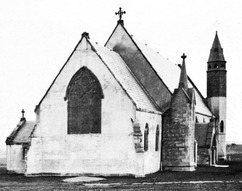 The church before rebuilding The church before rebuilding In 1952 working bees were held to clear away the stone from the original church that had been erected in 1860. As the old church was unsafe after the recent storm damage it was decided to rebuild the new church on the foundations of the old church. Built of Mount Gambier limestone, the cost was £5000. The old steeple was incorporated into the new design. It was hoped to find records of the laying of the foundation-stone (31 October 1858) in a bottle inserted into one of the stones, but this did not happen. The new church was not as large as the old one which had beautifully carved doors and windows. When it was erected in the early 1860s there was also a presbytery and school. It had been built to serve a much larger population. The Mount Moriac country was once thickly populated. Evidence of this could be seen from the number of deserted and decaying houses fifty years ago. The blocks were relatively small and as families grew the settlers found they could not make ends meet. These farmers often shifted to remote areas where blocks were larger such as in the Wimmera. A large proportion of the earliest settlers in Mount Moriac were Catholic and as this was the only Catholic church between Geelong and Colac parishoners flocked to it. It was reported that the stone used in the construction of the first church was faulty, and on many occasions the church had to be repaired. In 1869 the walls, erected at a cost of £4,500, were cracking and needed a large amount of money to make them secure. This damage was caused by the loose manner in which the foundation was put in. Alterations were again carried out in 1887. Damage to the church in that year included broken slates, and the destruction of the large stained glass western window which was shattered by a furious hailstorm. In 1929 leadlight windows were broken by someone throwing stones. In February 2017 more than 200 people watched at the auction when the property was sold for $605,000 to a local buyer. 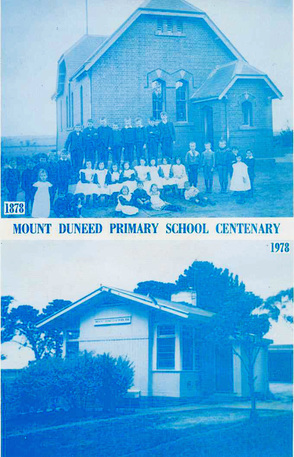 Front cover of the book Front cover of the book In 1978 a committee was formed to make suitable arrangements for a celebration of the opening of the state school 100 years prior. A book was produced documenting not only the history of the school but also the history of Mount Duneed, its early settlers and events up to the time of publication. A large crowd also enjoyed the historical display. The following arrangements were proposed: 11 March — Welcome by chairman at 1:45 pm. Official opening by prominent member of the public. Roll Call. Unveiling of plaque. Tree planting by oldest pupil present. Visitors book to be signed. Geelong West Technical School Band to provide music. Sale of Sherry Glasses with appropriate motif. Raffle consisting of 1st prize — hamper of groceries, 2nd prize — fruit cake and bottle of champagne, 3rd prize — box of chocolates. (all prizes donated). Sweets and soft drinks available. Hiring of amplifier from former pupil. Donation box to be available. Name tags supplied. Afternoon tea supplied by ladies. A centenary cake donated and decorated by former pupil. The cake to be in two blues, colour of the school, with a picture of the original school on top. To be cut by oldest former lady pupil present. 12 March — Church service to begin at 1:30 pm to be an ecumenical service to be followed by afternoon tea at the school. Shire of Barrabool and City of South Barwon both donated $100 towards the celebrations. Jubilee Celebrations
In 1928 a committee was formed to arrange the jubilee celebrations. Mr Rainford was chairman and treasurer. Messrs J Wohlers and J Alford were joint secretaries assisted by local ladies. Back to school commenced at 10 o'clock with all seats filled. Mr AG White, from a position on a lorry, introduced the Hon HF Richardson, MLC — councillor and past president of the Shire of South Barwon. He also presented trophies. Councillor Richardson (a former resident of Mount Duneed) who knew Mr Abercrombie, the first teacher, presented the school with a photo of the former teacher. Mr W Burville unveiled this photo. The oldest visitor in attendance was Mrs Jacka who was in her 90s. She was the grandmother of Captain Albert Jacka VC. A sports carnival was held in a paddock lent by Mr Anderson. A sports carnival was arranged for the younger generation in the next door paddock lent by Albert Anderson. The programme included a motor cycle race, bicycle race, pole vault, high jump, Siamese race, musical chairs, potato race, apple eating and balloon race. The results were published in the Geelong Advertiser on Wednesday 4 April 1928, page 10. A concert held in the evening was described by Melbourne visitors as one of the most pleasant they had ever experienced. At the concert Mr Harkness of Colac, one of the old scholars, moved a vote of thanks to all who had assisted in making the reunion so successful.
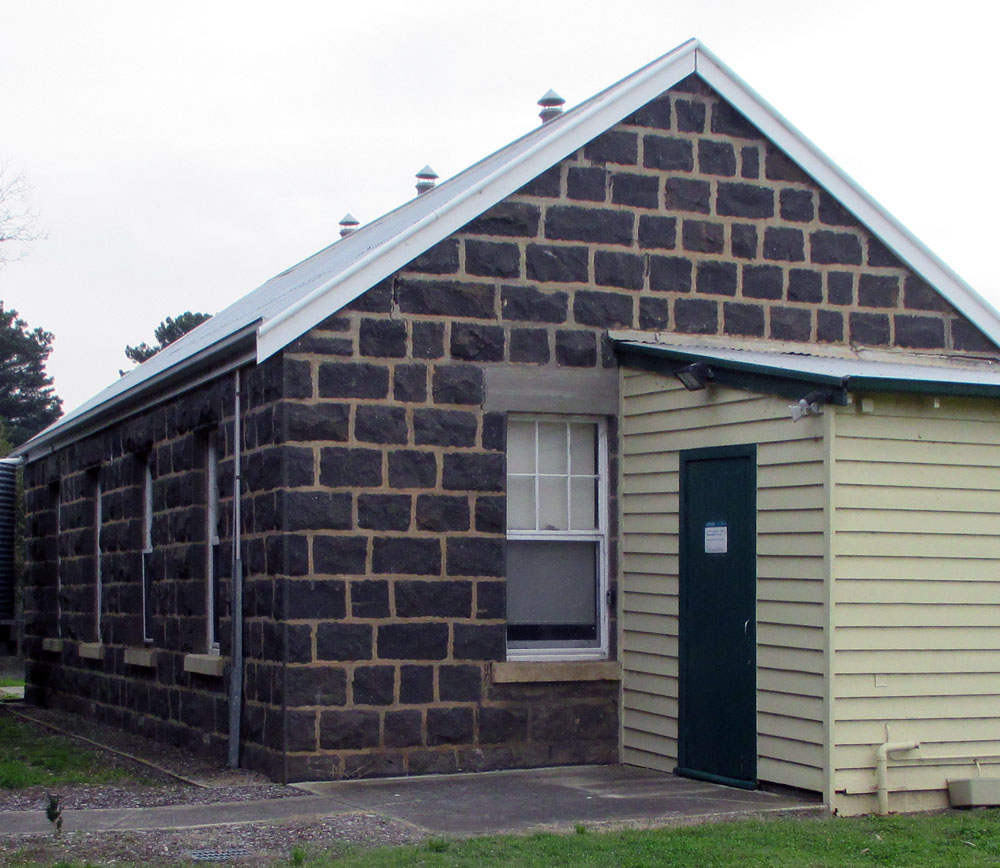 The old bluestone school at Modewarre is just up the Cape Otway Road near the corner of Considines Road. On the opposite corner of Considines and Batsons Roads Henry Lawrence operated a store and post office from 1861 which he upgraded in bluestone in 1864. The store was replaced by Lawrence's son, George, in about 1900, after the earlier building had been destroyed by fire in 1899. This building survives at Modewarre today. The Australian House Museum began in the late 1970s using the vacant land in front of Deakin University at Waurn Ponds. Buildings were arranged in a row in a street named “Common Place”. This project resulted in many buildings being classified and preserved that would have otherwise been demolished. This project ceased as a result of high maintenance of the houses and the need for the land to be used for other purposes. Frank Campbell gathered historic buildings at the campus between 1979 and 1992. The Freshwater Creek School and residence provided office space and an area for a small artefact museum. These buildings were used by Deakin as a valuable part of Australian Studies. It was planned for other humanities courses and possibly social science ones to use this resource for teaching purposes in the future. 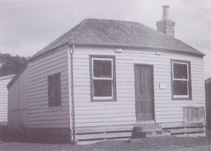 Hawker's cottage Hawker's cottage 86 Skene Street, Newtown "Hawker's Cottage" Built in 1854 as a two roomed house, it expanded to three, then four rooms. The detached kitchen was built in 1886. Kitchens began as outdoor fires with rudimentary shelter. They were detached by law for reasons of fire, tradition and hygiene. Disease was thought to be caused by smells and vapours and drainage usually ended in a cesspit. The kitchen seemed to be designed to create a room for a servant. After the museum closed this cottage was considered beyond repair and was demolished. 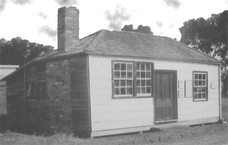 Bromley cottage Bromley cottage 26 Lupton Street, Geelong West "Bromley's Cottage" This tiny house by our standards housed twelve people in the Bromley family who lived there from 1862 to 1862 in a space 18 feet by 18 feet. Edward Thomas Bromley was transported to Port Phillip Colony at the age of 14 in 1847. His wife was the widow of his business partner, John Sherry. Sherry's family probably lived in the cottage too. The floor in the front two rooms was originally made from packing cases. As was common at the time the internal walls were lined with hessian and covered with wallpaper to keep out the drafts. It had timber shingles under the corrugated iron roof. It was relocated to Sun Street, Moolap before being included in the museum in 1984. After the museum closed this cottage was considered beyond repair and was demolished. 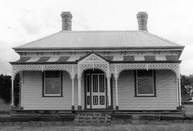 Herd's house Herd's house 69 Fyans Street, Chilwell "Herd's House" This is a lower middle class house built before the 1892 depression. The cast iron lacework is Indian inspired. The Herds were painters, decorators and plumbers. In 2004 this house was relocated to 122 High Street, Drysdale. 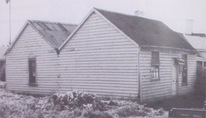 Jacob Werner's cottage Jacob Werner's cottage 13 McNicol Street, Geelong West "Werner's House" This building is presumed to have been two separate one roomed miners cottages built about 1855 and relocated from the goldfields. The two dwellings were combined and divided into rooms to form a four roomed house about 1865. Originally the cottages had no ceilings or walls. These were added by Jacob Werner after he moved in. He was a German musician, who settled in Geelong and became a painter and decorator. Originally the roof was covered in whitewashed timber shingles. This house may have been relocated in central Victoria. 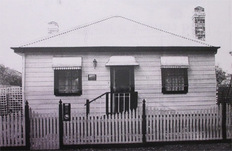 21 Brewongle Ave, Hamlyn Heights 21 Brewongle Ave, Hamlyn Heights 22 Coronation Street, Geelong West "Arthur's house" This 1854 prefabricated house in Geelong West was recommended by the Geelong West City Council for inclusion in the project at Deakin University to allow the site in Coronation Street to be redeveloped. When the house was at this site the front of the house was on the boundary with the front doorstep on the footpath. The house is considered to be of architectural significance and as such was protected under the Geelong Regional Commission's Interim Development Order. Developers planned to donate the house and contribute $500 towards the cost of its removal. The house was a rare example of a prefabricated timber house believed to have been built in Singapore in 1853 to help meet a housing demand caused by Victoria's gold rushes. Factories set up by the British in Singapore employed Chinese craftsmen making thousands of houses to meet the demand. Alexander Fyfe who built Hillside in Williams Road, Mount Duneed imported many of these houses. When the museum was being wound up Arthur's House hit the road again for its new home facing a tree-lined park in 21 Brewongle Avenue, Hamlyn Heights. 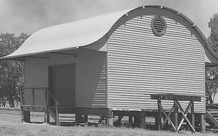 The shed at Muckleford The shed at Muckleford The Winchelsea Goods Shed The shed which originated at Winchelsea on the Geelong-Warrnambool line is similar to many others. A similar shed was once at Birregurra on the same line. Built in 1876 it came to the museum in 1987 and was used to store recyclable building materials. After the project closed the shed was moved to the Muckleford station on the Victorian Goldfields Railway. It is available for hire for parties or for corporate events as well as Victorian Goldfields Railway training and general activities. 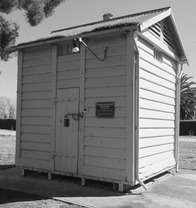 Police Lock-up, East Street, Inverleigh This lock-up, which was erected in 1888, is very secure as it has a steel cage concealed under the timber. Almost 200 of these were installed throughout Victoria at small police stations. They were used from the 1870s until the 1960s. They were cold in winter and hot in summer. They were mainly used to hold drunks overnight. The policeman's wife had to supply meals. When the museum closed it was returned to Lawsons Park, East Cambridge Street, Inverleigh. 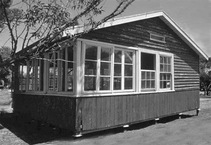 The room at Natimuk The room at Natimuk Natimuk Open-Air Pavilion School Natimuk Open Air Pavilion School was constructed by the Public Works Department in 1914 as an open air classroom at the Natimuk State School. It was the only building in the museum not to have originated in the Geelong area and was moved to the museum in 1988. The room held up to 48 children. Three sides had canvas shutters fitted above three feet. Forty four of these classrooms were built between 1911 and 1914 in the hope of creating a healthier environment at a time when Tuberculosis was at plague proportions. These classrooms were unpopular with teachers in the winter. The room was returned to 28 Noradjuha Road, Natimuk, in the grounds of the Natimuk School in 2002. 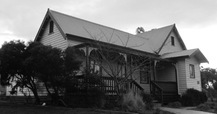 The school at Mount Duneed The school at Mount Duneed The Freshwater Creek State School The local Freshwater Creek community contacted the museum to suggest that their school be moved to the Waurn Ponds site, as they felt it was doomed by eventual road widening. The building comprises a teacher's residence and a schoolroom with a capacity of 60 children. After demolition of chimneys the bricks were moved to the university. A large front room added in the 1950s was also removed. The roof was cut off as the gothic style school was too high to travel in one piece. It was then moved in two sections. After relocation the building has been fully renovated. The three two metre finials on the gables had to be remade, a new verandah, new rear porch and balconies and walkways constructed. Most schools of the 19th century have been well researched and the design of original features could be taken from this knowledge and by research from the people of Freshwater Creek. This type of school and residence was designed by the government architect, based on traditional designs which evolved slowly in the 19th century. The schools were built in a set of standard sizes. The teacher's residence has two bedrooms, built in an era when five or more children per family was usual. The schoolroom was heated by an open fire. After the museum closed the school was returned to its original site. In 1994 the school was once again on the move, this time because of the merging of Freshwater Creek, Connewarre and Mount Duneed State Schools. The school is now in the grounds of Mount Duneed Regional Primary School and is used as a classroom. 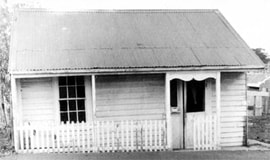 3 McKillop Place Geelong "Shabott's Cottage" An 1849 cottage moved to Deakin in 1982. It was later demolished
Teachers
1858 — J Bowen 1859-63 — William H Wake 1864-68 — Robert Brooks 1869-71 — Joseph Edwards 1872-82 — Thomas Job 1883-84 — Thomas P Martin 1884-90 — Herman EFJ Lampe 1890-1903 — John Clappison 1903-17 — John R Hawse 1918-19 — Annie I Walsh 1920-25 — Russell C Hanby 1925-26 — Mary G Murray (Mrs Smith) 1926 — Sidney Pring 1927-30 — Harold McGregor 1930-34 — Harry L Tucker 1934 — Eileen J Lynch (Mrs King) 1934-37 — Sidney H Gray 1937 — Rosina E Milne 1937-42 — Ernest St J H Bingham 1942-47 — Malcolm Greer 1942 — Sarah M Seward (Mrs) 1943 — Nancy H Hanrahan 1947 — Kevin P O'Hagan 1947-53 — Laurence G McFarlane 1954 — Kenneth M Kirk 1954-64 — Thomas J Kingston 1965-67 — David Singleton 1967-69 — Donald T Reeves 1969-71 — Howard W Willis 1971-75 — Robert W Smith 1975-77 — Graham F Brown 1977-79 — George W Meadows 1980-82 — John C Evans 1983 — Kevin C Collard 1983 — Mrs Helen M Kreeck The school was shifted to the grounds of Deakin University in what was called the Australian House Museum. The university had a bare paddock in front of the original buildings which became a site for early timber houses that were threatened with demolition. Subsequently the school was shifted to the grounds of Mount Duneed Regional Primary School after the house museum ceased to exist. After the move, railings and handrails were added to the front verandah and stairs, a pair of posts was added beside the stairs, the chimney was removed, the two metre long finials on the gables were removed and the double window on the right side was again replaced. This window was originally a single one and had been changed to a double with two sheets of plain glass the size of the present window. This is why it looks a little large for the style of the building. 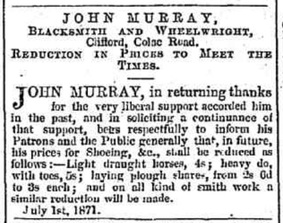 Clifford had a blacksmith, hotel, church/school, post office and store. It took its name from Lawrence Trewin’s Clifford farm on the corner of Colac, Devon and Cape Otway Roads. He moved to Echuca in 1875. A store was run by Herbert Cotton, who also ran a licensed store and hotel in Russell Street, Chilwell. He married Elizabeth Trewin in 1862 and had 9 talented children who entertained with singing and dancing and playing two violins, a cornet, a piccolo and a piano. Stephen Sleator was the next licensee. He also ran the Argyle hotel on the corner of Aberdeen and Coronation Streets. He also ran the store at Clifford. He moved to the Wimmera in 1876. Trewin then called tenders for the lease of the store and hotel for three to five years. James Gorell, who owned a business at 517 Moorabool Street, South Geelong, was the successful tenderer. The hotel was destroyed by fire in May 1877. Although both Trewin and Gorell were insured, the hotel did not re open, probably because of the declining population in this area. Subsequent generations of the Gorell family have been successful businessmen in Geelong. The post office, which was originally named Amblerton, opened on 17 September 1868, was renamed Clifford on 1 October 1868 and closed on 28 May 1877. A blacksmith, John Murray, operated in the early 1870s. His advertisements appeared in the Geelong Advertiser from 1871-74. A Church of England school was established on 15 August, 1853, with John A Boyd as its first teacher and an attendance of 21. Its name was Colac Road but was changed in 1856 to Duneed. It became Common School No 187 in 1869 when it had 42 pupils. The name was changed again in 1871 to Clifford. It closed on 18 August, 1875. Arthur Streeton's father, Charles, was school teacher at this school from 1 August 1865 to 13 June 1869. Arthur was born at the school house.
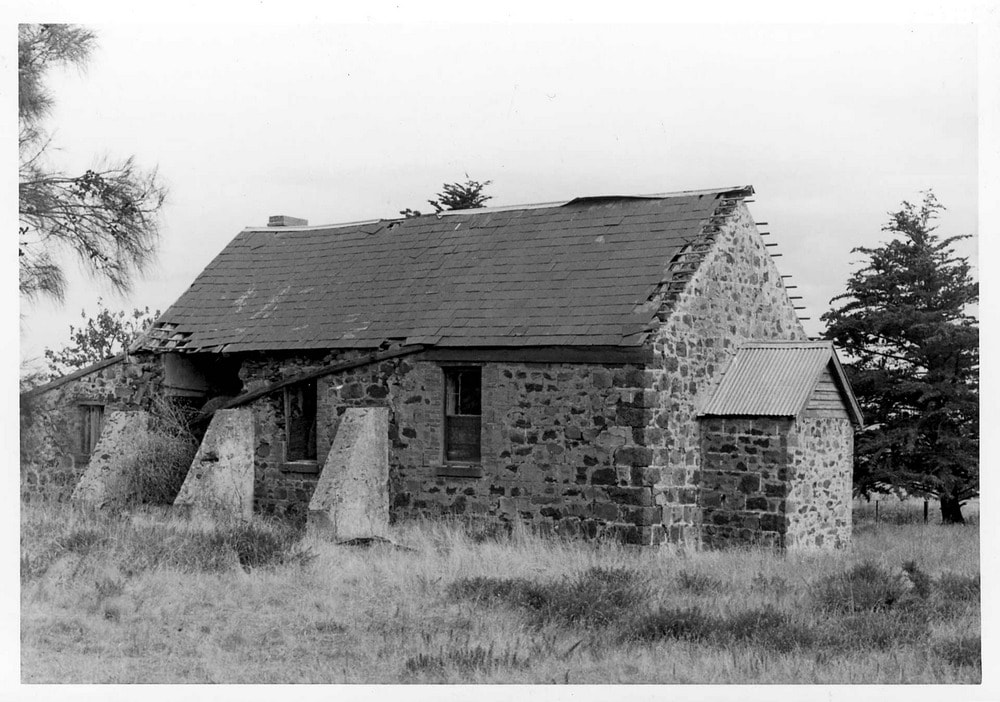 A Presbyterian school which opened in 1856 on the north east corner of Mount Duneed and Pettavel Roads had 31 pupils by 1858. It was originally named Duneed with William Savage as head teacher. A stone church was later built on the Mount Duneed Road site by the Presbyterians. — J.T. Collins Collection, La Trobe Picture Collection, State Library of Victoria 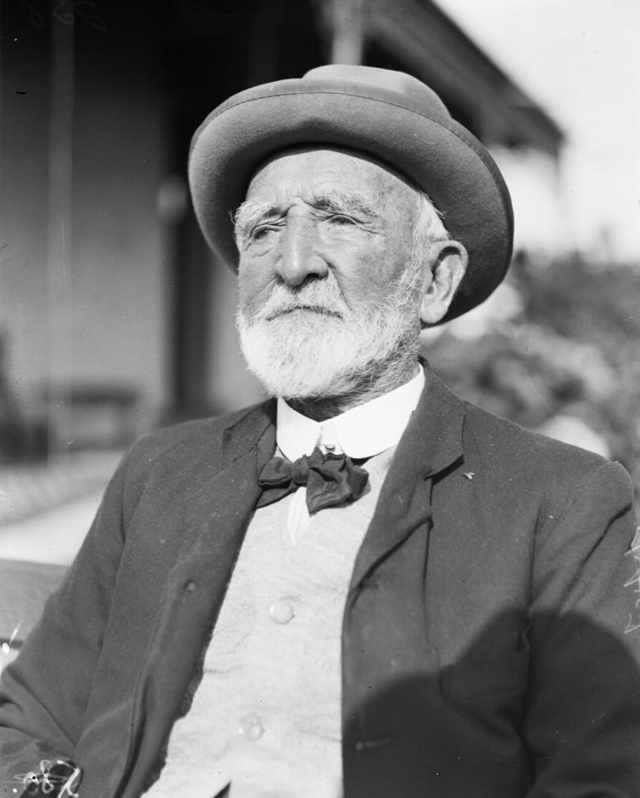 Many sources have stated that the birthplace of Arthur Streeton was Mount Duneed. A monument in Ervins Road gives Mount Moriac as his birthplace. We looked at his birth certificate to see what was recorded. The birth was registered on 8 April, 1867 at Mount Moriac and stated that he was born at Duneed. This could have been anywhere in the Parish of Duneed which stretches from Torquay Road, Mount Duneed to Mount Moriac just past Hendy Main Road. We knew that his father was a school teacher and lived at the schoolhouse, but which school? At this time there was more than one school named Duneed. There was Common School number 167 near the south east corner of Cape Otway and Colac Roads. Its original name was Colac Road, but was changed to Duneed in 1856. The name was changed again in 1871 to Clifford. There was also a school on the north east corner of Pettavel and Mount Duneed Roads. This school number 186 was originally named Duneed. It was changed to Pettavel in 1884. Duneed Free Church School was opened by the Presbyterians in 1858 in Mount Moriac. A national school was established near the junction of Barrabool, Considines and Colac Roads. It was first known as Mount Duneed number 401. In the next year it was referred to as Modewarre School, but in 1869 it became Mount Moriac. It is easy to see why later generations were confused. To find the answer his father's school records were checked. This shows that Charles Henry Streeton taught at Duneed School number 187 until 13 June 1869. This area is now known as Mount Moriac. On 15 January 1944 Mount Duneed suffered devastating losses when a fire swept through the area. 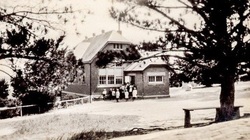 Mount Duneed State School 1922 Mount Duneed State School 1922 Marilyn Scott is trying to track down a Mount Duneed State School photo, which would have been taken in the early 1920s. Among those photographed was her father Walter Robert Scott who was born in 1916. She would be grateful for any assistance offered and can be contacted on 5229 4877 or 0423 721 462.
A boy named Schell, living at Mount Duneed, some 12 miles out from Geelong, was on Sunday evening driving some cattle through a paddock, when a calf only a few yards from him was struck by lightning and killed instantly, whilst the boy received sufficient shock to throw him off his feet. The Mount Duneed state school was unroofed and the chimney demolished.
From The Argus Wednesday 27th November 1901 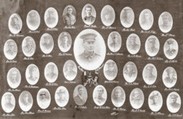 An American Tea arranged by the Mount Duneed Red Cross Sub-centre in aid of Gala Day Fund was held in the local State school on Friday evening... During the evening a photographic honor roll containing the photographs of 33 old scholars and three district soldiers of the Mount Duneed school and district was unveiled. Cr White, who was introduced by the chairman of the school committee (Mr. F. Rickard), spoke very feelingly of the way the men of the district had enlisted, and said that the honor roll, to which all the residents of the district had subscribed, would show them that we were not unmindful of their sacrifice. Similar sentiments were expressed by Cr. W. F. McIntyre, who thanked the Mount Duneed people for the invitation to be present at the unveiling ceremony. From the Geelong Advertiser Wednesday 31st October 1917 The names on this memorial are listed on the Together They Served website. http://togethertheyserved.com/mt-duneed-names/ This comprehensive website lists WW1 names and memorials for all of Surf Coast. It is well worth looking at. This school began in 1877 and was opened on 11th February 1878. The Geelong Advertiser often reported activities at the school in the nineteenth century. The Mount Duneed Improvement Association (known as Mount Duneed Mutual Improvement Association after 1895) and the Mount Duneed Rifle Club met regularly at the school and concerts were often held. Political addresses to voters were held and it was used for polling booths on election days. Later the Mount Duneed Red Cross met there. After the jubilee in 1928, there were so few pupils at Mount Duneed and Freshwater Creek schools, the teacher Mr H McGregor held two days at Mount Duneed and three days at Freshwater Creek, alternating every week. Finally in 1939 Mount Duneed closed to re-open after 4 years. In October 1917 a photographic honour roll containing the photographs of 33 old scholars and three district soldiers of the Mount Duneed school and district was unveiled. This school was destroyed by fire in January 1944. The fire which started near Waurn Ponds swept over Mount Duneed destroying 14 homesteads, 2 cottages and the Church of England. William Preston, aged 66 who was a farmer was killed in the fire. |
SponsorsLinksThe Bluestone Cottage at Marshall
Together They Served Torquay Museum Without Walls Barwon Blog Geelong and District Database Geelong Cemetery Index Australian War Memorial Trove Public Records Surf Coast Early Schools Victorian Places Barwon Heads History |
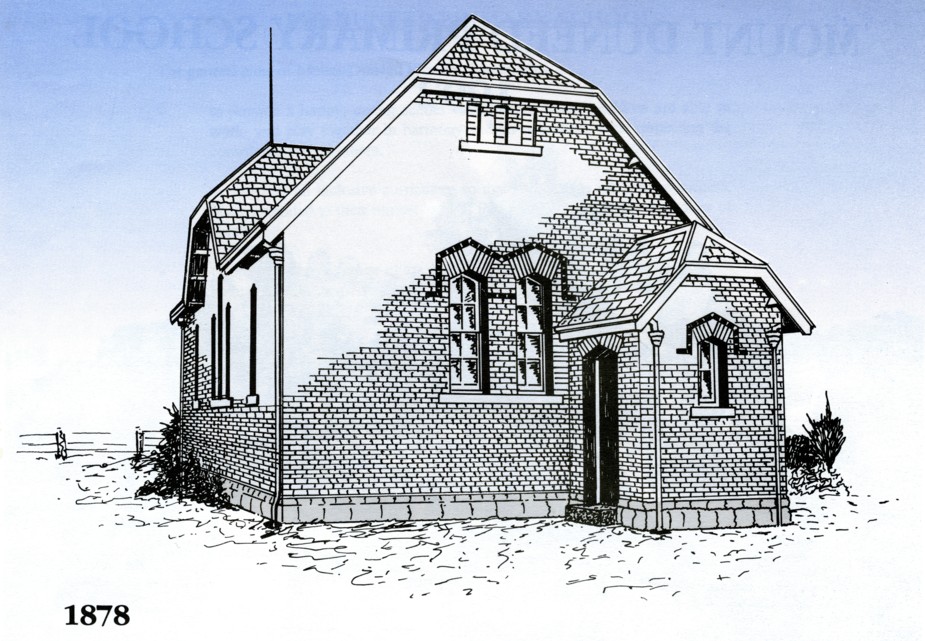
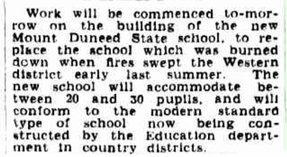
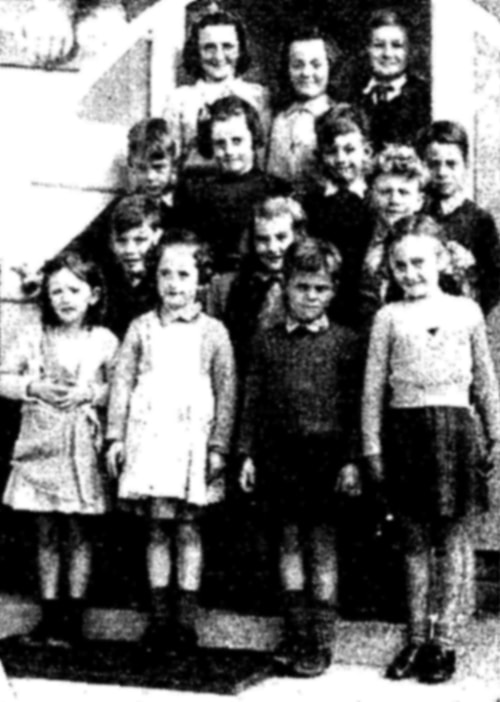
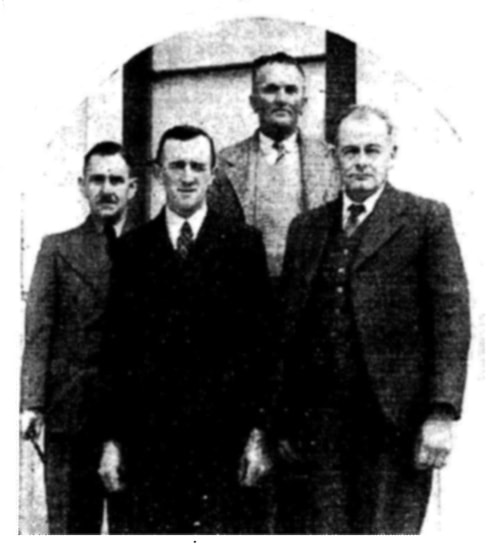
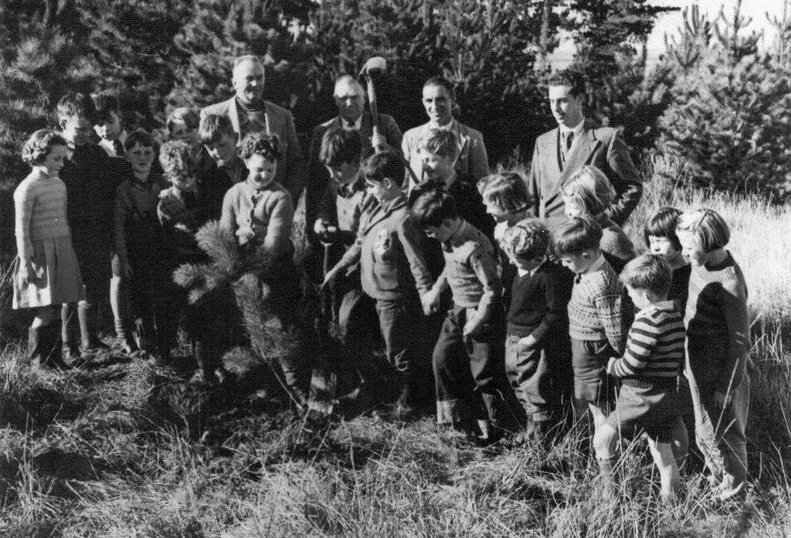
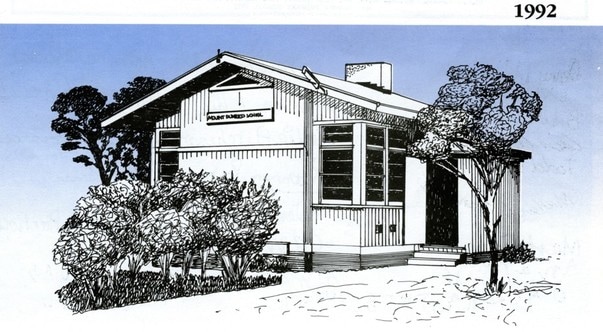
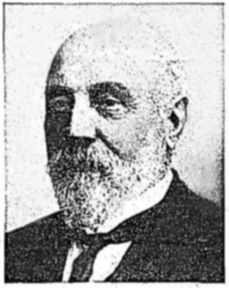
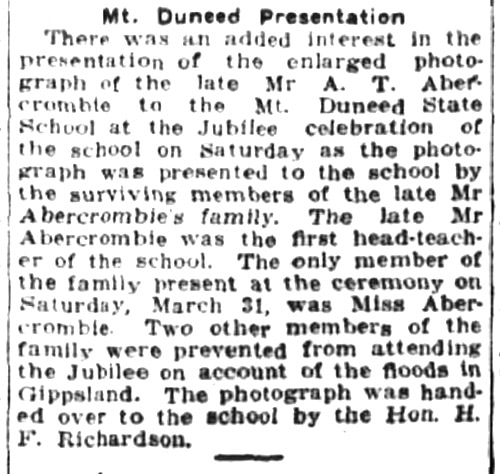
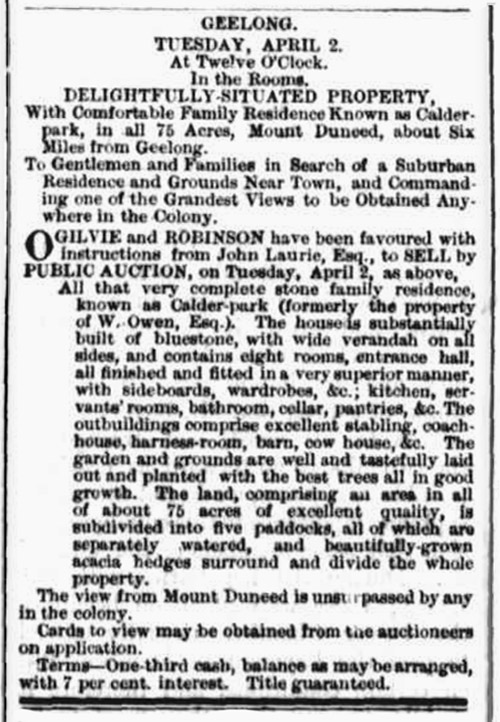
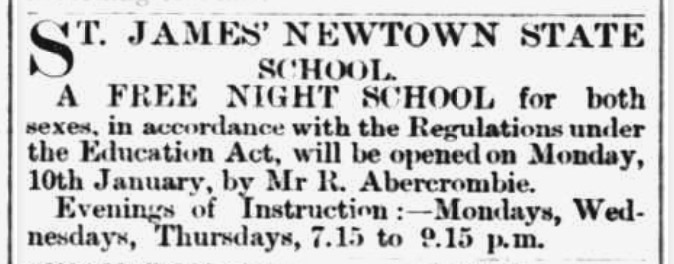
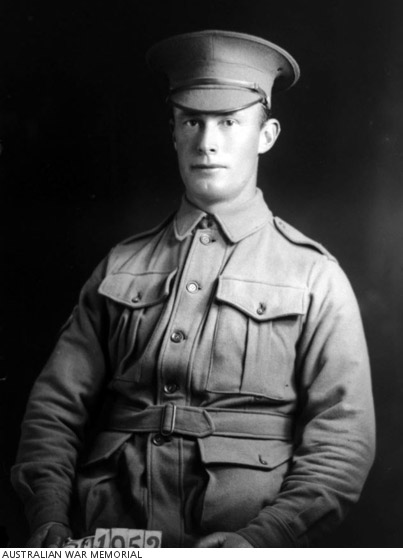
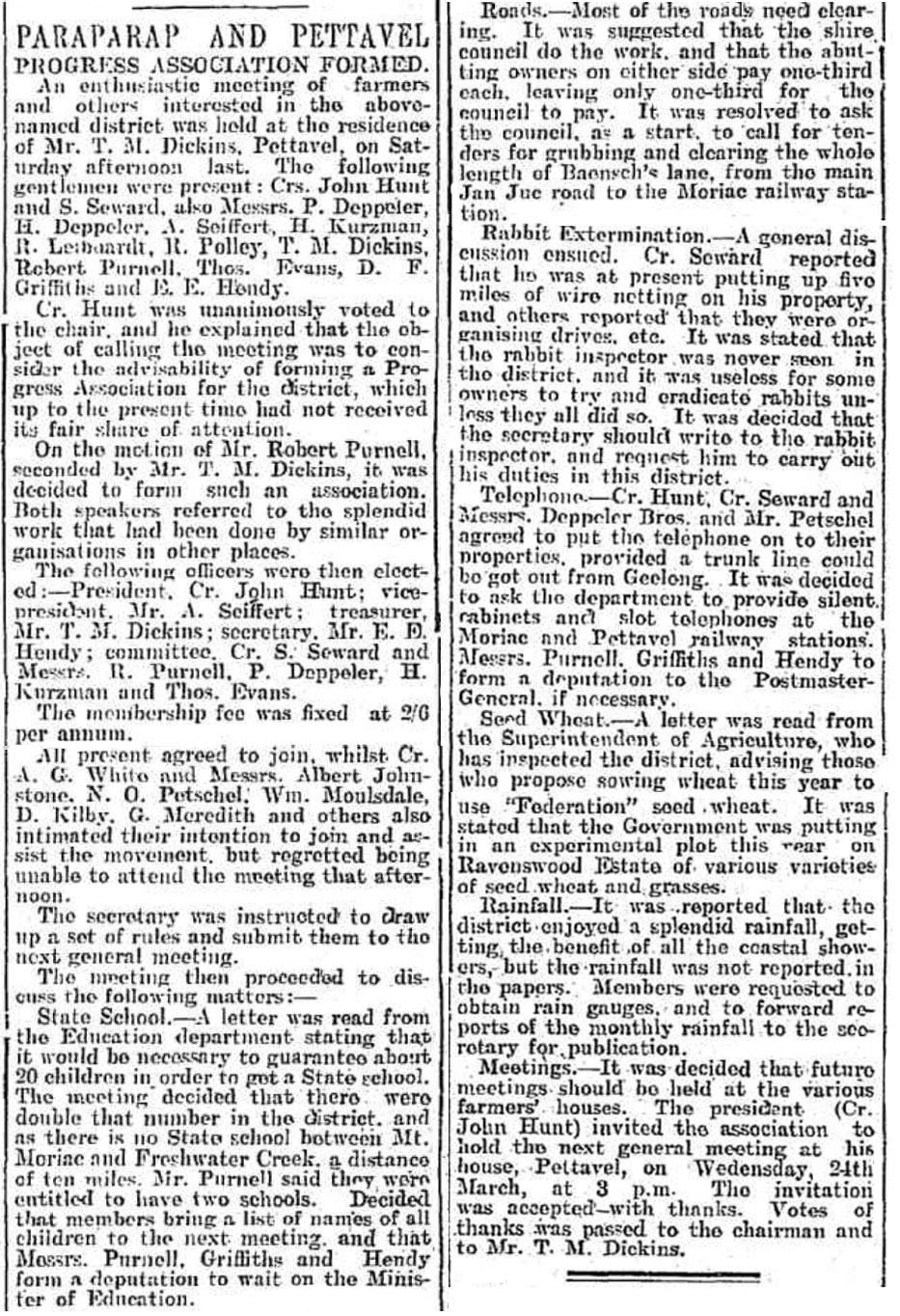
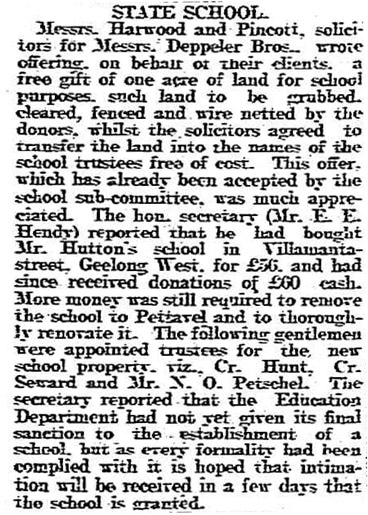
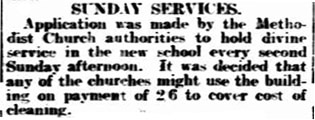
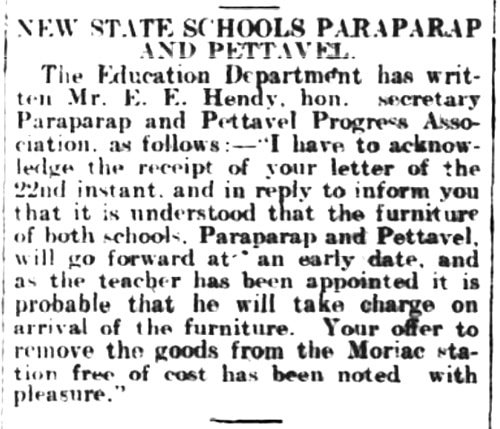
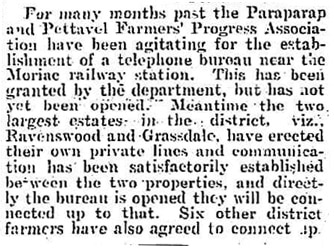
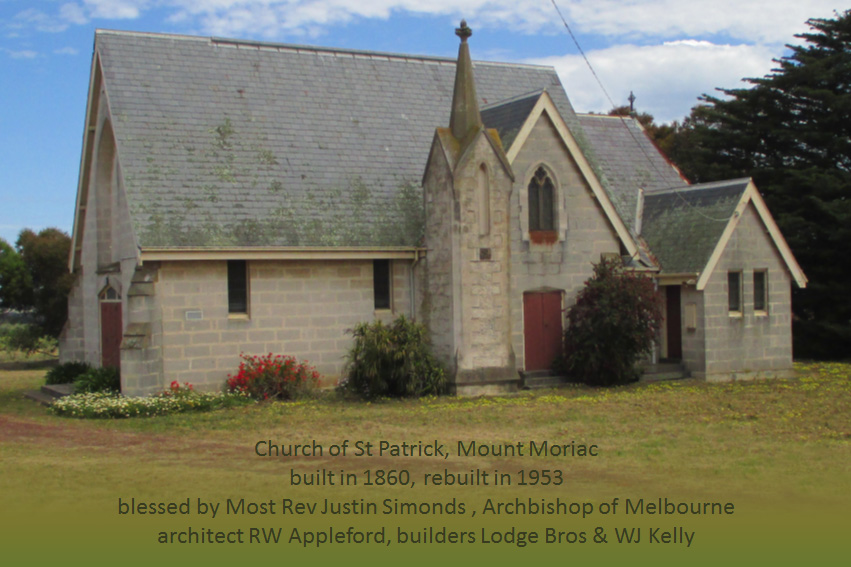
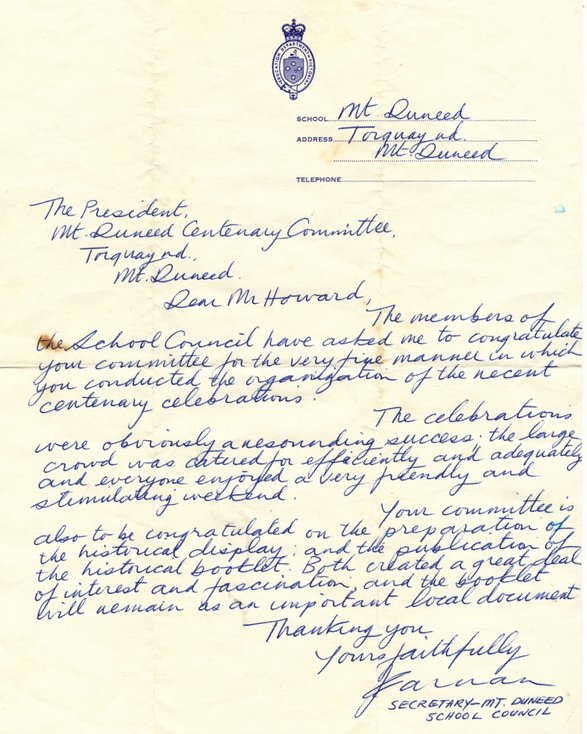
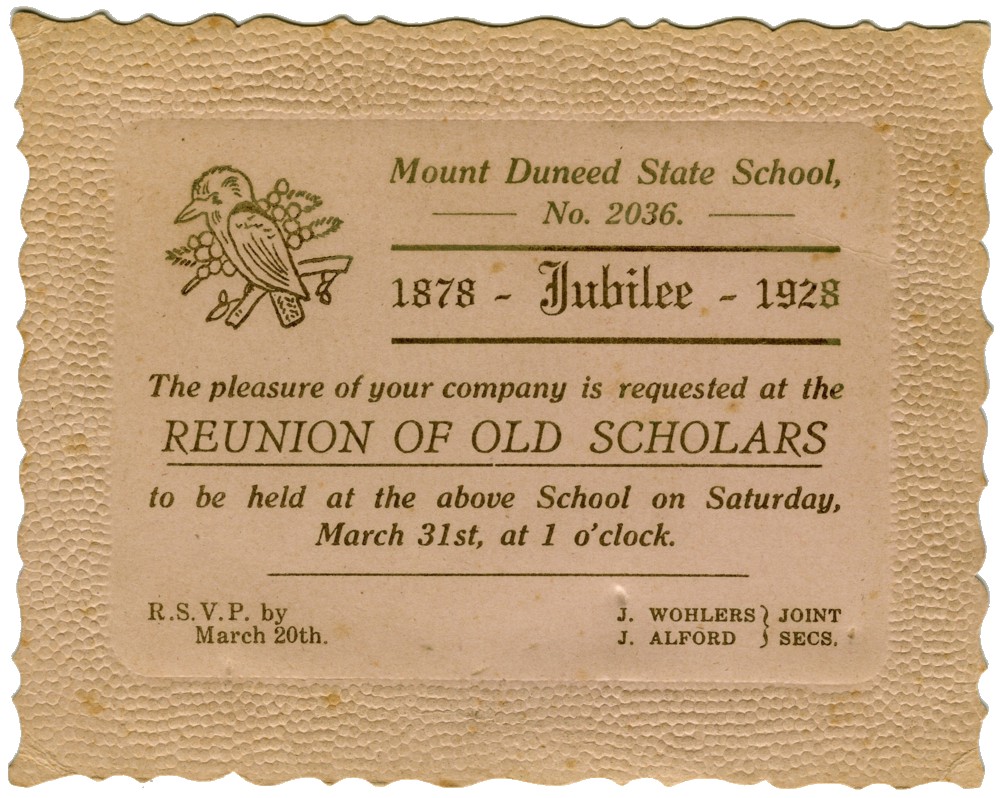
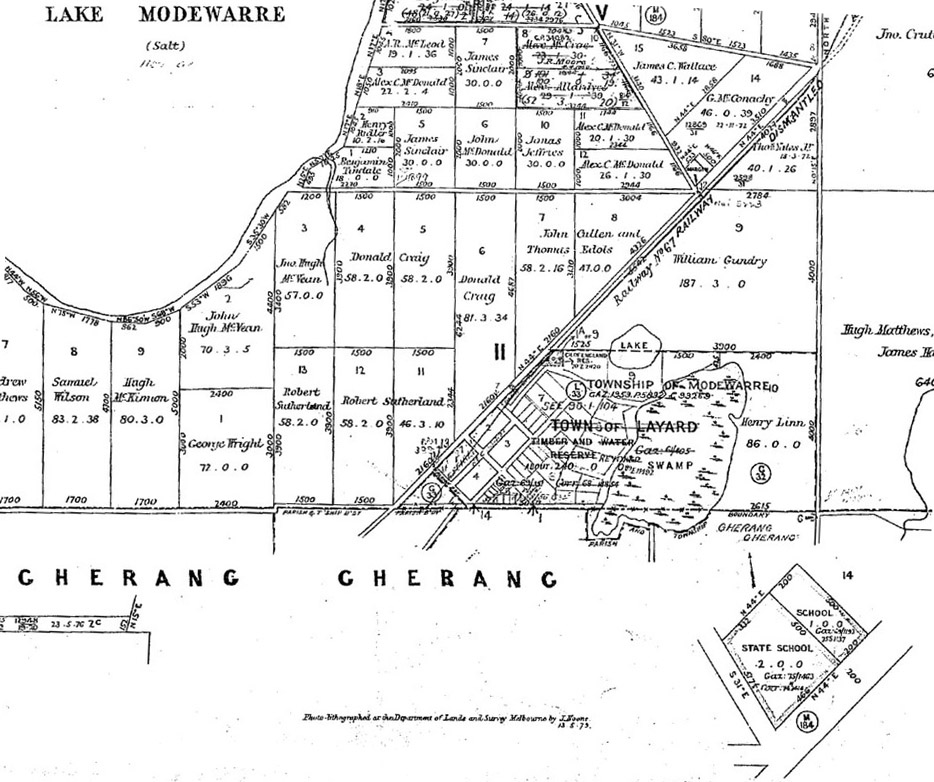
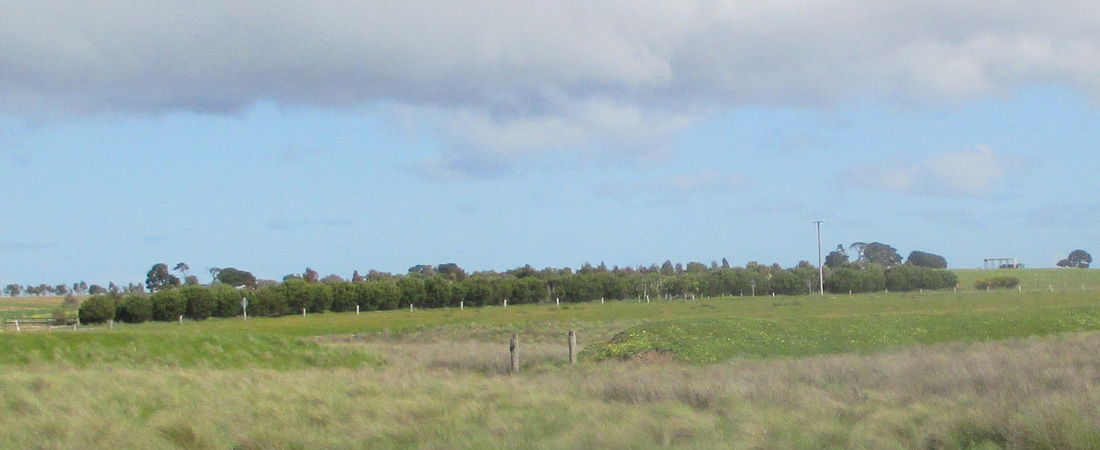

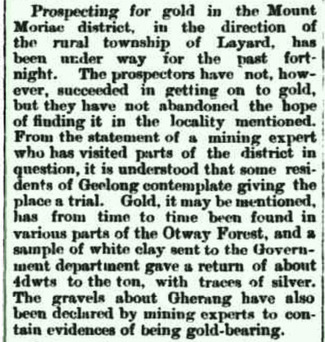
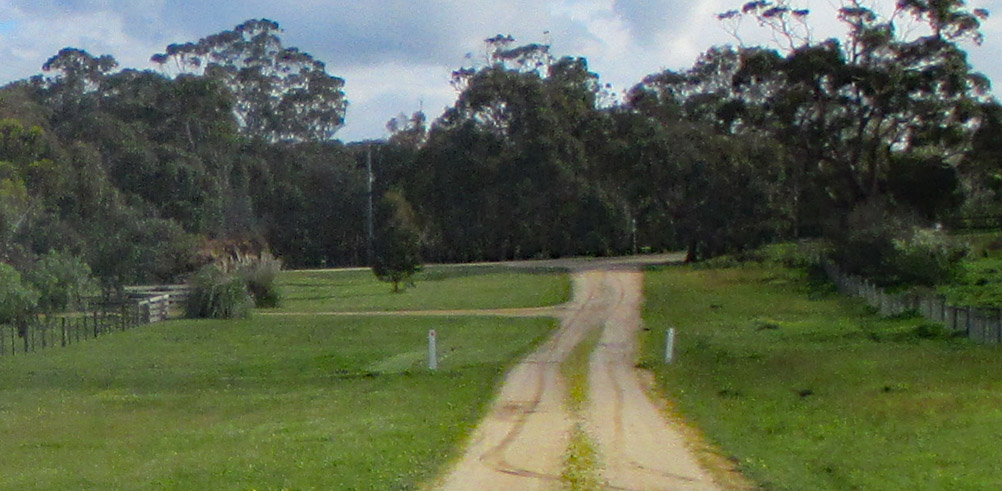
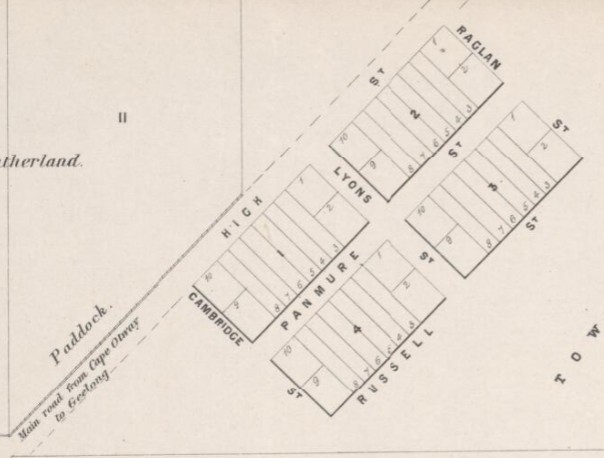
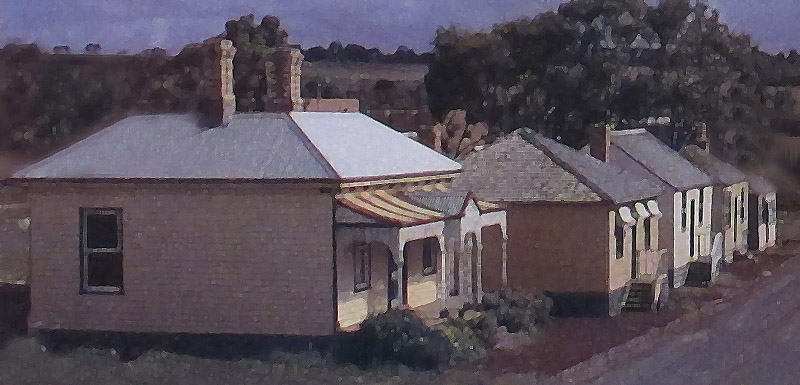
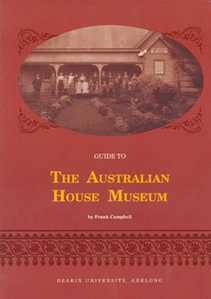

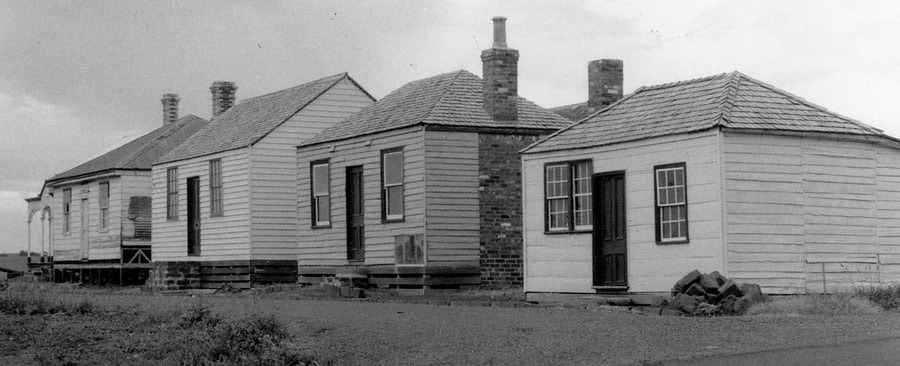
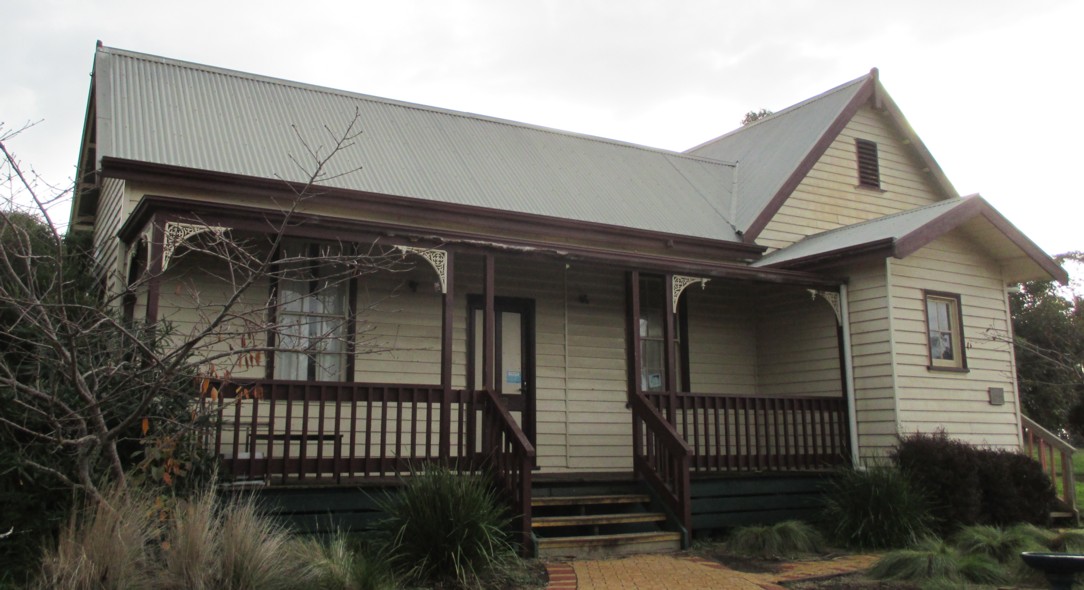
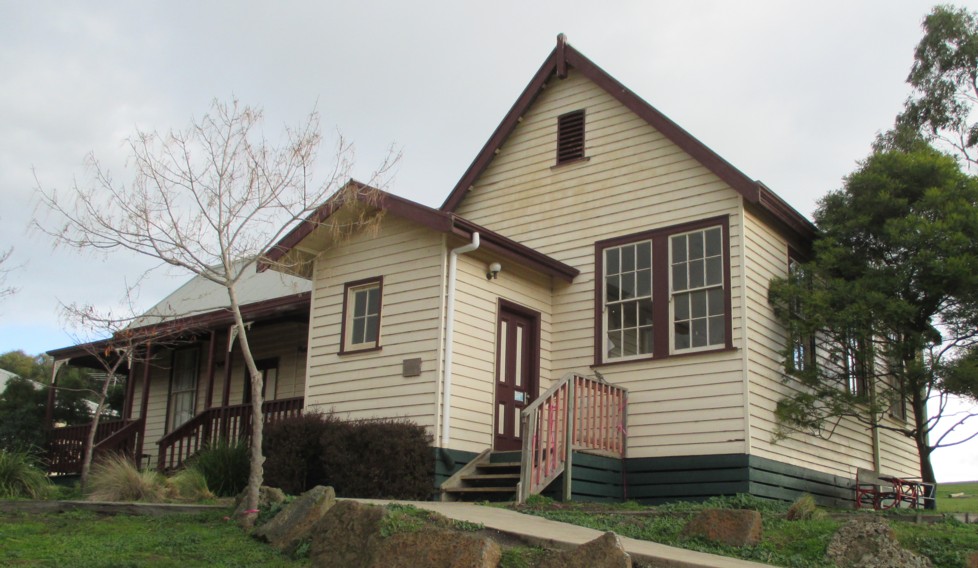
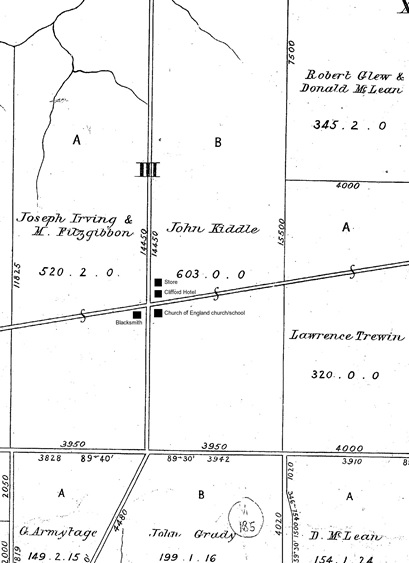

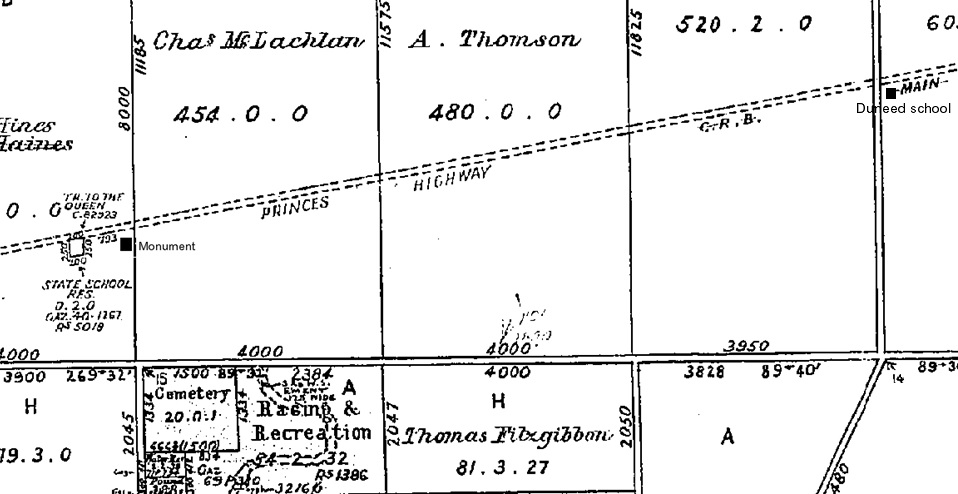
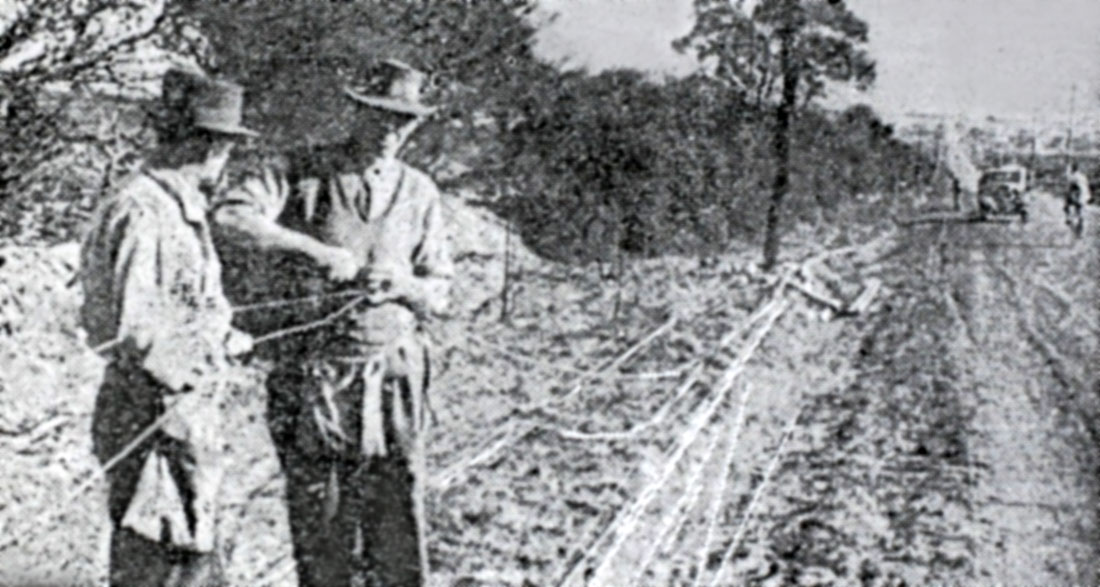
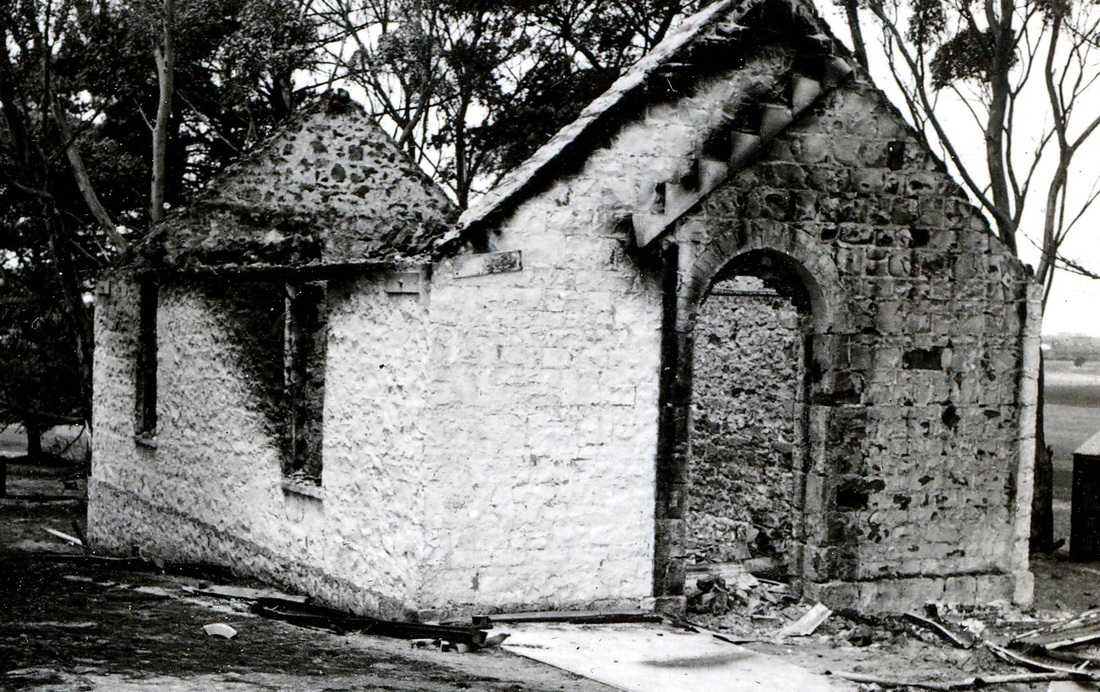
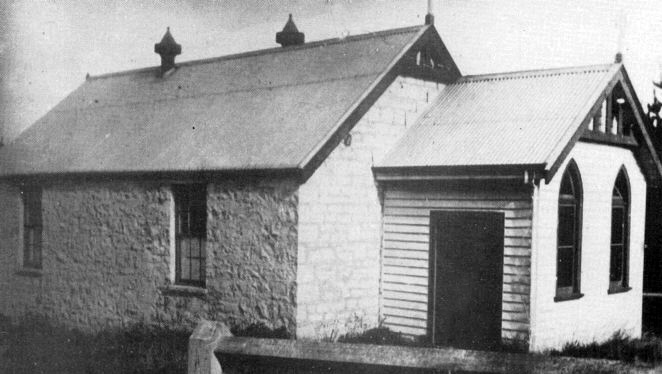
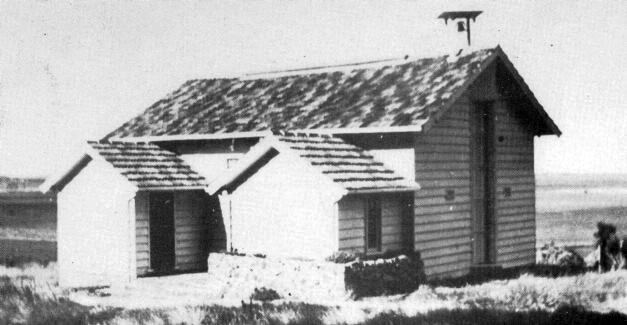
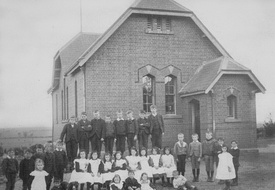
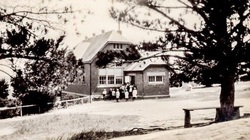
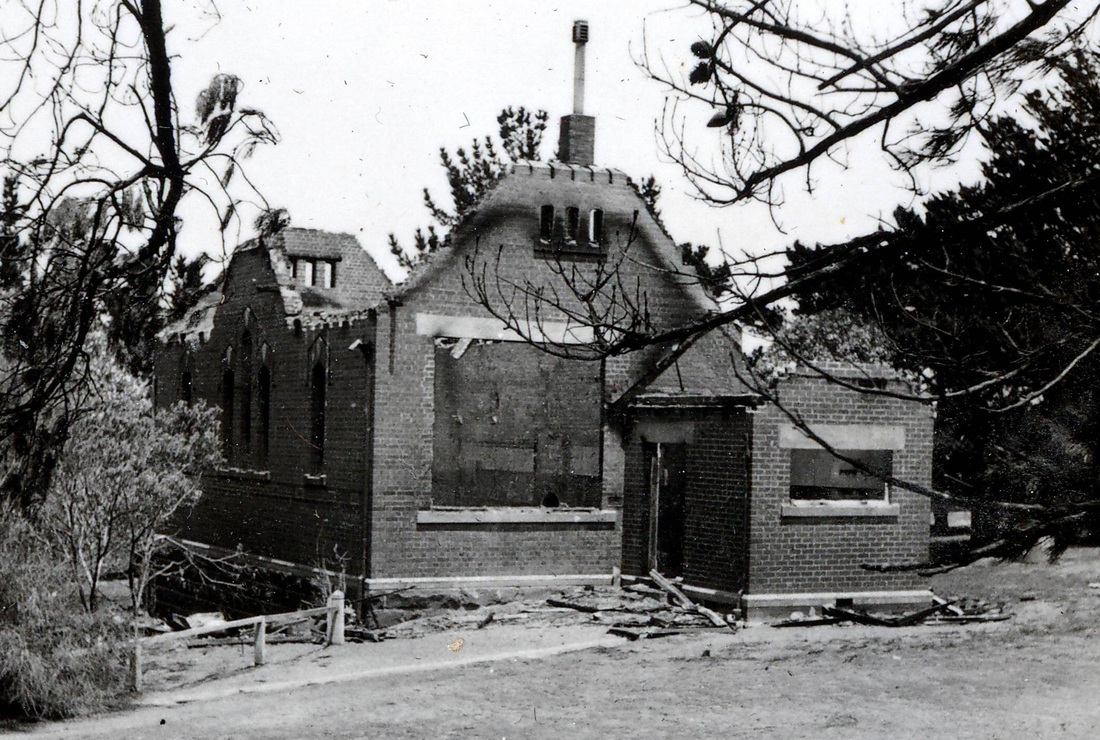
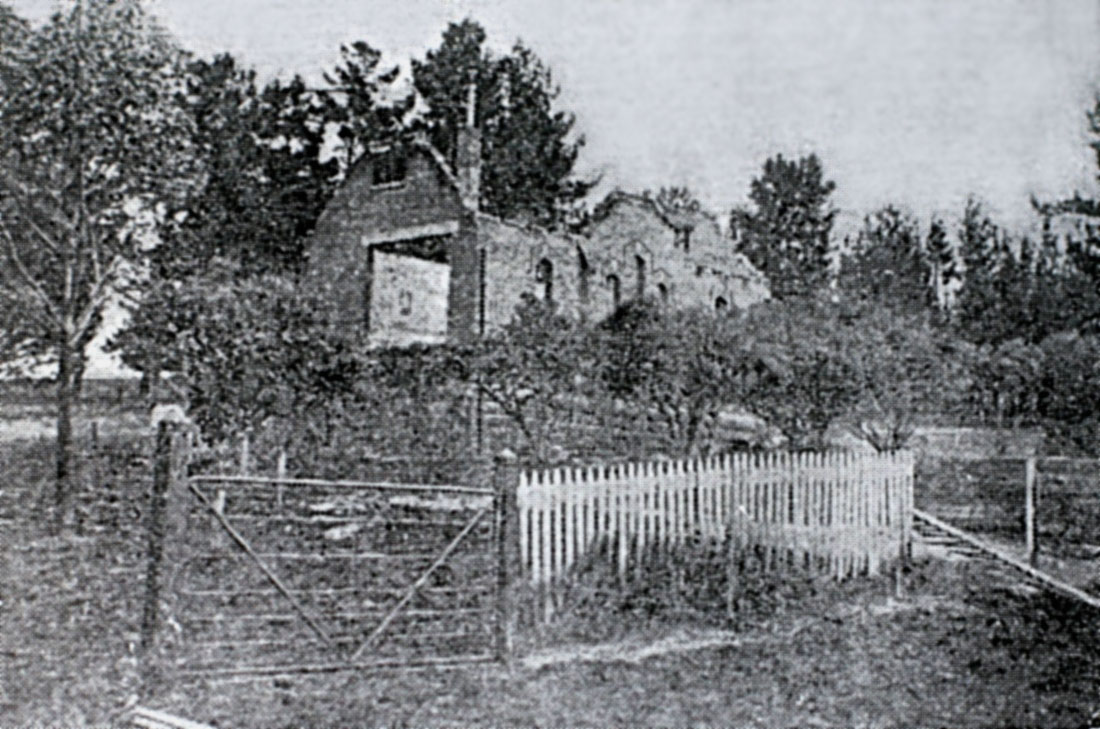
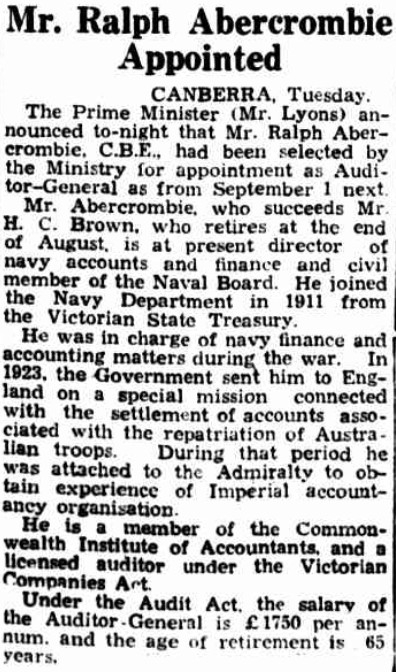
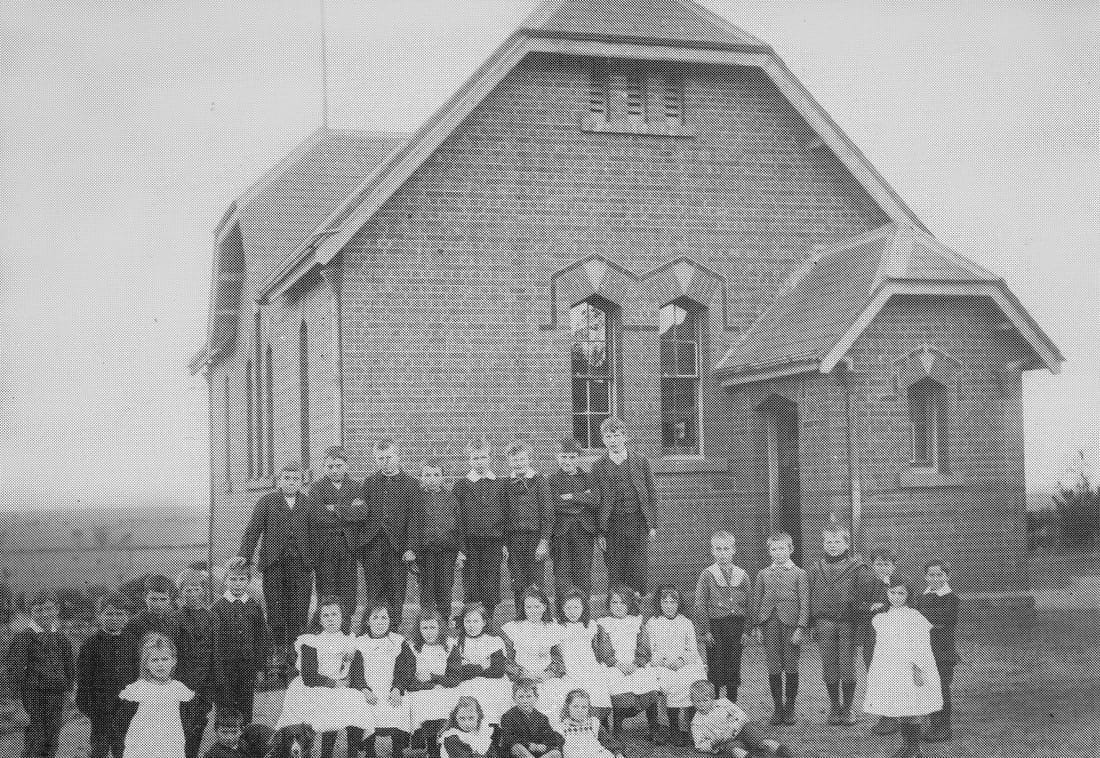


 RSS Feed
RSS Feed
